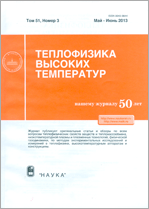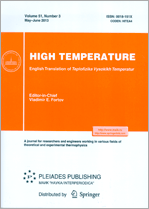|
This article is cited in 3 scientific papers (total in 3 papers)
Plasma Investigations
New mechanism of interaction between a welding-arc discharge of reverse-polarity direct current and an aluminum surface
A. E. Balanovskiy
National Research Irkutsk State Technical University
Abstract:
The results of a study of aluminum welding by reverse-polarity direct current in a medium of protective gases (argon) at the stage of the binding and formation of the pool of melted metal are presented. It is shown that cathode spots in a current range of $5$–$50$ A and action time of up to $1$ s do not clean the cathode film from the aluminum surface but remelt the surface layer. The types of cathode spots that form on the aluminum surface are analyzed. It is shown that evaporation is the main mechanism for the removal of the oxide film. A new mechanism of the interaction between a welding-arc discharge an aluminum surface is proposed: the main role in the formation of the welding pool is played by an immobile cathode spot, which, on the one hand, evaporates the oxide film and, on the other, intensely heats the surface layer of the aluminum to the phase transition due to high heat density. After the formation of the weld pool, the immobile cathode spot disappears, followed by the diffusion regime of welding arc burning. The regime is characterized by a uniform distribution of the electric field over the length of the discharge gap with a low potential decrease and occupies almost whole interelectrode gap.
Received: 13.03.2019
Revised: 16.05.2019
Accepted: 24.06.2019
Citation:
A. E. Balanovskiy, “New mechanism of interaction between a welding-arc discharge of reverse-polarity direct current and an aluminum surface”, TVT, 57:6 (2019), 819–834; High Temperature, 57:6 (2019), 784–797
Linking options:
https://www.mathnet.ru/eng/tvt11204 https://www.mathnet.ru/eng/tvt/v57/i6/p819
|


| Statistics & downloads: |
| Abstract page: | 272 | | Full-text PDF : | 147 | | References: | 24 |
|





 Contact us:
Contact us: Terms of Use
Terms of Use
 Registration to the website
Registration to the website Logotypes
Logotypes








 Citation in format
Citation in format 
